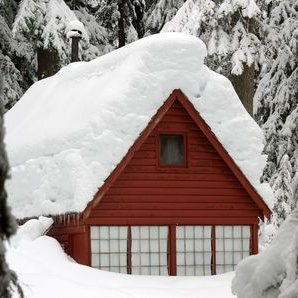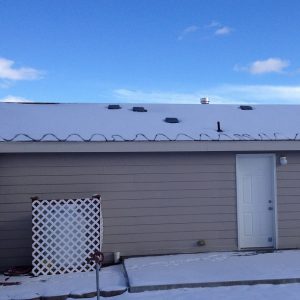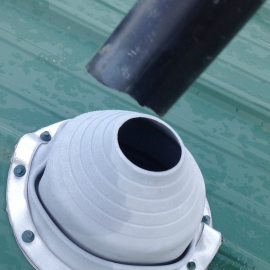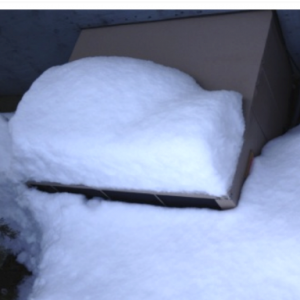IS YOUR ROOF REALLY CARRYING ITS LOAD?
 Do you know the warning signs of when there is too much snow and ice on your roof? What steps do you need to take when your roof has reached its limits? Who is keeping an eye on your home when conditions change? Are they always inspecting your home after a major storm or are they worried about their own properties? Do you expect your friend or neighbor to be on call 24 hours a day, 7 days a week, in the event that something happens? What will you do if your friend, relative or neighbor is out of town when a major storm hits?
Do you know the warning signs of when there is too much snow and ice on your roof? What steps do you need to take when your roof has reached its limits? Who is keeping an eye on your home when conditions change? Are they always inspecting your home after a major storm or are they worried about their own properties? Do you expect your friend or neighbor to be on call 24 hours a day, 7 days a week, in the event that something happens? What will you do if your friend, relative or neighbor is out of town when a major storm hits?
The combined weight of snow and ice on a roof is not always fully understood by many homeowners. Three feet of snow in the picture above could be equivalent in weight as one foot of snow and two inches of ice in the right hand picture. Often, we grab the shovels, brooms and roof rakes when we see the kind of snow in the left-hand picture and start snow removal but assume that there is nothing to be concerned about in the other condition. Each inch of ice buildup is equal to adding another foot of snow on your roof. The moisture content of snow also has asignificant impact on roof loading. Moisture saturated snow can weigh as much as 20 lbs. per cubic foot and each inch of ice thickness adds another 5 lbs to these calculations. So, if you have a foot of saturated snow and 2 inches of ice on your roof, you are quickly approaching 25 to 30 lbs. per square foot of snow load. The flatter the roof, the greater is the risk since there is minimal drainage as compared to a steeper roof. Therefore the moisture stays trapped within the snow and turns to ice thereby adding to the weight on the roof.
 Many structures are under different design rules for snow loads. A number of manufactured homes are only designed for 30 to 40 lbs per square foot of snow load. Newer, stick built buildings are subject to much stricter codes. It is important for each homeowner to know what their particular home was designed for in order to be prepared for adverse weather. There are several reasons why roofs can fail. If the actual snow load on the roof is more than the design load, then there is a danger of potential collapse. Improper building design and/or faulty construction can also result in failure, as can older buildings that have been subjected to decay or damage. In addition, buildings are typically only designed and constructed to support the design loads for a very limited time before structural fatigue weakens the roof and collapse can occur. These levels of loading are not intended to last all winter.
Many structures are under different design rules for snow loads. A number of manufactured homes are only designed for 30 to 40 lbs per square foot of snow load. Newer, stick built buildings are subject to much stricter codes. It is important for each homeowner to know what their particular home was designed for in order to be prepared for adverse weather. There are several reasons why roofs can fail. If the actual snow load on the roof is more than the design load, then there is a danger of potential collapse. Improper building design and/or faulty construction can also result in failure, as can older buildings that have been subjected to decay or damage. In addition, buildings are typically only designed and constructed to support the design loads for a very limited time before structural fatigue weakens the roof and collapse can occur. These levels of loading are not intended to last all winter.
 Wood buildings often exhibit certain signs before they fail. Sounds such as creaking, cracking, and moaning of building components can indicate potential failure. New cracks and movement in interior walls and ceilings and difficulty opening windows or doors are additional warning signs. Any bowing of structural members should also be viewed as a warning sign. If you notice any of these signs, you should leave the building and take steps to have the snow/ice promptly removed. If you are an absentee homeowner, it is very important to have a knowledgeable person checking out your vacant home during the winter.
Wood buildings often exhibit certain signs before they fail. Sounds such as creaking, cracking, and moaning of building components can indicate potential failure. New cracks and movement in interior walls and ceilings and difficulty opening windows or doors are additional warning signs. Any bowing of structural members should also be viewed as a warning sign. If you notice any of these signs, you should leave the building and take steps to have the snow/ice promptly removed. If you are an absentee homeowner, it is very important to have a knowledgeable person checking out your vacant home during the winter.
One of the services that we perform at Lake Chelan HomeWatch is the visual inspection of roofs after major snowstorms. We have special tools that allow us to remove  heavy snow thereby relieving structural stresses on roofs and gutters. We also inspect for any damage caused by the avalanche effect from snow rapidly sliding off the roof such as broken plumbing and roof vents, torn off gutters, impact damage to heat pumps, etc. and we take steps to immediately protect your property. We are your S.W.A.T. (Severe Weather Action Team) when severe weather hits.
heavy snow thereby relieving structural stresses on roofs and gutters. We also inspect for any damage caused by the avalanche effect from snow rapidly sliding off the roof such as broken plumbing and roof vents, torn off gutters, impact damage to heat pumps, etc. and we take steps to immediately protect your property. We are your S.W.A.T. (Severe Weather Action Team) when severe weather hits.
For more information on how we can protect your home, please Contact Us by clicking here.

Recent Comments